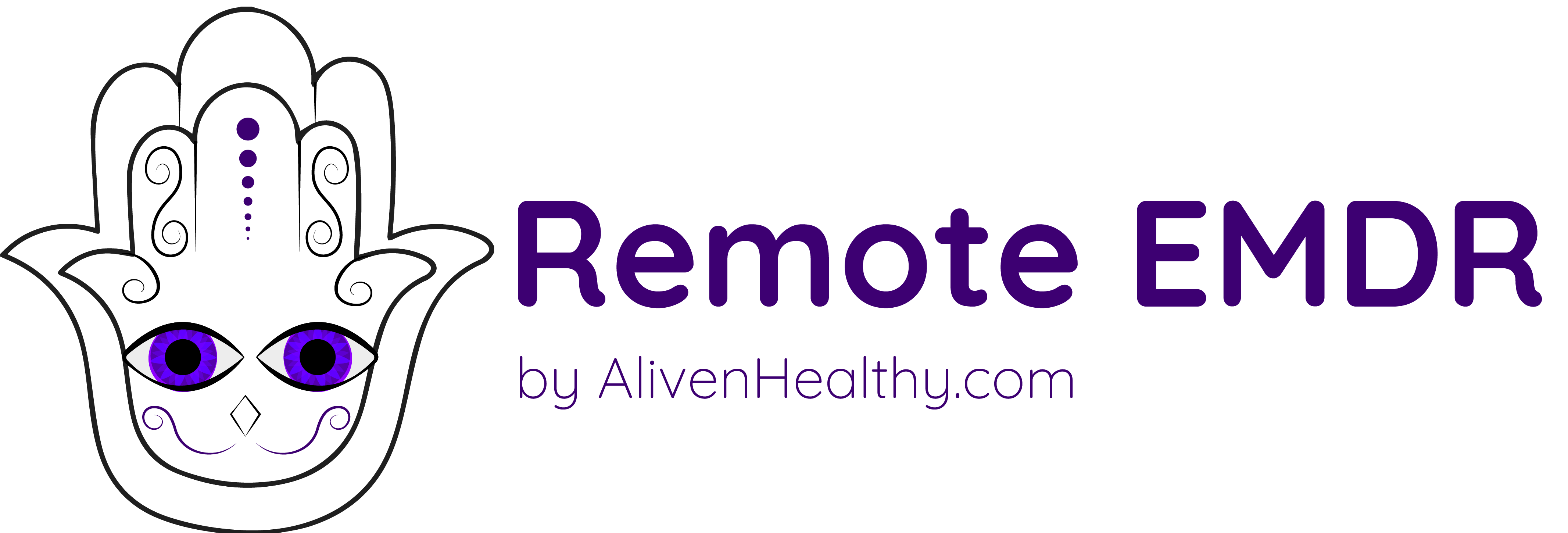 As the parent of an ASD child, you probably have a lot of interrupted sleep and time during the day when your thoughts are also interrupted suddenly and brutally. You may experience more than the usual amount of interrupted conversations with other people as well. Though it isn’t your child’s fault that these interruptions occur, they can lead, over time, to an emotional breaking point. That’s because we need to be able to process information by going into specific brainwave states throughout the day and/or Rapid Eye Movement (REM) sleep at night.
As the parent of an ASD child, you probably have a lot of interrupted sleep and time during the day when your thoughts are also interrupted suddenly and brutally. You may experience more than the usual amount of interrupted conversations with other people as well. Though it isn’t your child’s fault that these interruptions occur, they can lead, over time, to an emotional breaking point. That’s because we need to be able to process information by going into specific brainwave states throughout the day and/or Rapid Eye Movement (REM) sleep at night.
So how can you overcome this problem of not being able to process stress and trauma during the course of your days and nights as the parent of an ASD child? Eye Movement Desensitization and Reprocessing / EMDR is a simple right-brain to left-brain processing “hack” that helps your brain process data and stress so that you can integrate information and release trauma that makes it hard for you to emotionally just be okay.
Why It’s Important to Be Okay as the Parent of an ASD Child
As the parent child, you probably spend more time worrying about your child than about yourself and your own needs. But it’s vital, as a parent, that you have some kind of practice that actually works to release trauma and pull your energy back into your center during the day. Today’s parents also function as healers for their children. When children are very ill or suffering from a disorder that challenges the entire family, parents need to be able to find their center.
I remember hearing words like “grounding” and “centering” as a young parent and thinking that these were really foofy words that perhaps meant nothing. But I felt that way in large part because I was so far from my center and so NOT grounded that I couldn’t even begin to understand the “felt sense” of what these words meant. Recently, at age 48, my baby granddaughter had a seizure. It was a mild seizure, but it scared me. And my fear took over. Anger came next. Within 24 hours after this event, my anger was in the driver’s seat and my fear was in the passenger seat. The part of me that was sitting in the back seat knew that anger and fear had no idea what to do or where to go with these new developments.
I live in an area of the world where psilocybin is accessible, so I took a microdose of psilocybin to work through the anger and the fear. I know from years of experience that fear and anger won’t lead me to healing solutions for myself or the people love. On the other hand, if I can find hope and faith and “centering” of my energy inside of myself, I can be guided to serendipitous bits of information that I need in order to solve whatever health problem I encounter for myself or for my loved ones.
Click here to buy psilocybin online.
Not everyone has access to psilocybin and not everyone is willing to work with psilocybin to integrate difficult information and release trauma, but EMDR is safe, effective, and easy to use at home. EMDR is a trauma-release tool, but it can also be used to process information that challenges us. It can be especially useful if it’s combined with breathwork that helps you release stress and anxiety. A daily practice that combines the use of EMDR (while following the Internal Family Systems model that we describe at this link) with breathwork can help you find your center and begin to release trauma permanently.
When you begin to find your center, you also begin to notice when you’re not centered. It makes sense that parents who are centered and who know how to become centered (if for only minutes out of every day) are more able to help their children find their center also. The “stillpoint” of the “center” is where and when a parent can find insight and “discover” ways to help themselves and their children heal even if doctors have given up on them or stopped trying to help. There are, after all, people who have been able to cure ASD. But every child is different. Parents / guardians are a child’s best and often only resource in terms of healing autism. So it’s vital that parents be able to find their center using tools that promote trauma release, breath, and brainwave states that are conducive to sudden insight.
Brainwave States
During the daytime hours, it can be challenging to achieve certain brainwave states if you’re interrupted often enough and if you’re not able to reliably achieve a “flow state” on a fairly regular basis with something that you’re doing. Normally, we go into alpha and theta brainwave states throughout the day when we have time to relax and get into a flow state. Theta brainwave states involve deep relaxation and access to the unconscious mind. A person who is in a consistent theta state may be napping or they may relaxing deeply.
On the other hand, if a person is oscillating between alpha and theta brainwave states, they may be wakeful and alert, but restful and in a deeply internal state where they have access to memories and data stored in the unconscious mind. Oscillations between alpha and theta brainwave states are conducive to the release of stress and trauma as the brain and body go between a deeper unconscious state of mind and an alpha state that involves conscious, restful, awareness. The movement of data from the unconscious to the conscious mind helps us release stress and trauma in a healthy way. The DreamLight.app is a brain entrainment tool and guided meditation app that was created to produce alpha-theta states as well as deep meditative and hypnotic states conducive to healing. The DreamLight.app can be used in different ways to gain access to trauma so that you can pull it into the left brain for release and integration.
Click here to learn more about the DreamLight.app, a guided meditation and brain-entrainment tool.
REM Sleep and EMDR
At night, we go through a series of sleep cycles to slowly move toward Rapid Eye Movement / REM sleep. During REM sleep, the eyes move back and forth rapidly underneath the eyelids which represents the left-brain to right-brain communication taking place during this stage of sleep. Like the DreamLight.app, REM sleep helps us take unconscious right-brain material and move it into the left brain. Stressful or traumatic events are processed by moving them from the right brain to the left brain, back-and-forth. REM sleep is the stage of sleep in which we dream and it is also the stage of sleep in which we release trauma and stress. If REM sleep does not occur because the sleep architecture is disrupted, trauma and stress buildup in the body-mind, in the autonomic nervous system, to cause mental illnesses like anxiety or depression or even psychosis Children as well as adults suffer when their sleep architecture is disturbed, but EMDR can help re-establish a healthy sleep architecture and REM sleep cycles by releasing and integrating trauma that has gotten caught in a bottleneck of overwhelm.
Parents and caregivers of ASD kids don’t always get a good night of sleep and they may also experience a higher than average number of interruptions during the day. This can lead to a sort of “emotional constipation” that can be hard to overcome without some kind of tool to get trauma integration and release moving. EMDR involves a back-and-forth eye movement that’s similar to the eye movements that we make during REM sleep so it helps us process stress and trauma. This, in turn, can help improve sleep quality at night and feelings of calm wakefulness during the day.
EMDR for Relationships
EMDR and the DreamLight.app are unusual in that they release trauma and as such, they have the ability to lighten the emotional load for ASD parents in a more permanent way than antidepressants or anti-anxiety drugs. These technological tools that work with the human body to produce results can be used by parents to release long-held trauma and also everyday stressors that build up as a result of poor sleep or constant interruptions throughout the day. What’s interesting about trauma release is the fact that as trauma is released and integrated, parents become more present. As parents become more present with their child their children experience lower levels of stress and their behaviors improve.
EMDR for Autism Management
Modern medicine and psychology doesn’t teach us anything about the extent to which our bodies are wired to respond to and feel other people. It definitely doesn’t teach us about how parents are connected to their children and how the healing of a parent can be healing for a child. It isn’t hard for a parent to understand how it would impact them if their child was able to heal ASD, but the same is true for children in regard to their parents.
When I was a child, I had visceral chickenpox and as a result I developed heart arrhythmias. When the arrhythmias would happen, they would end with my heart stopping for 15-30 seconds. I would black out. But as a 6 year old, I learned very quickly to try to hide the arrhythmias from my terrified parents. As the darkness of a blackout would close in on me, I’d sit as still as possible and try to pretend like there was nothing wrong because I could see, each time, that it scared my parents so much. A parent who can get a grip on their own fear can do wonders for a child who’s sick. But it’s a lot of pressure to tell parents to not feel the way that they feel when they’re terrified, angry, sad, exhausted, etc. You can’t just make yourself not feel the way that you feel as a parent. What you can do though, is try to use the technology of the human body, the “hacks” in the design of the human body that allow us to consciously take control of certain things like eye movements that are normally unconscious.
Breath is another thing that typically happens as a result of the unconscious mind, but we can consciously control breath. So breath is another way to “hack into” the human system to release trauma and stress.
EMDR is a tool that people use to focus on an Intention (some issue, feeling, or thought) that they wish to address in their lives. After they focus on the Intention, they watch a ball go back and forth across the screen. As the eyes move back and forth from left to right, the left hemisphere of the brain and the right hemisphere of the brain communicate with each other on the topic conveyed in the Intention. The original “intentional thought, feeling, or memory” that troubles you is bounced back and forth between the hemispheres to consult with the logical part of your mind as well as the intuitive, emotional part of your mind.
This back-and-forth dialogue between the right hemisphere of the brain and the left hemisphere of the brain fosters trauma and stress integration. Integration is all about finding meaning and purpose in whatever challenges you. It’s about centering yourself on the wisdom of your life’s challenges so that you can be present and able to solve your life’s problems with greater aptitude.
But in addition to this right hemisphere – left hemisphere work, EMDR also pulls gently on the skull bones which “float” over the top of the meninges of the brain. The skull bones are pretty tightly set, but there are “sutures” between the bones that allow for very gentle movement and the flow of cerebrospinal fluid. If the cranial bones move out of place, they put pressure on the cranial nerves as they exit the skull. This can cause headaches (including migraines), seizures, negative thoughts, neck pain, shoulder pain, and a variety of other health problems if it isn’t resolved. The cranial nerves play a role in the autonomic nervous system which can become overly reactive and imbalanced if these nerves are pinched or constricted in any way. EMDR can help resolve trauma and stress in a manner similar to certain of the techniques used in craniosacral therapy to restore balance to the autonomic nervous system.
The autonomic nervous system deals with many things from organ control to unconscious gestures that we make while speaking to another person. It is this part of the mind-body organism that deals with and communicates about stress to other people even if our words and our thoughts say that we aren’t stressed. In other words, if you’re really stressed and if you carry trauma that has not been properly released for integration, you are likely communicating with others about this stress and trauma through physical gestures and facial mannerisms.
As the parent of an ASD child, these physical gestures and facial expressions may be communicating messages to your child that your mind did not intend which can add stress to your family unit. As you work with something like EMDR or the DreamLight.app though, you’ll release the unconscious messages that leak into dialogue with your child and with other people.
Craniosacral therapy is yet another type of trauma-release that works with the entire spinal column. EMDR works primarily to release trauma via the right-hemisphere-to-left-hemisphere crosstalk and slight adjustments to the cranial bones.
To schedule a private online EMDR session, click here.
EMDR vs. Talk Therapy
EMDR belongs to a class of treatments that are known as “trauma-informed therapies”. Trauma-informed therapy has a mind-body orientation that does not require the use of a lot of talk for it to work. These types of therapies acknowledge that trauma and stress is mostly stored in our bodies and not in the brain. Trauma, as a body-oriented issue, must be dealt with using a system or systems that cause trauma to rise to the surface – into the conscious mind – from a mostly unconscious or “felt sense” experience – and become accessible and then release-able. The release of trauma is not actually a “release” per se, but rather integration of trauma from being a focal point of stress, chronic physical pain, illness, or relationship issues to becoming something meaningful that’s a part of a much bigger picture.
When people first start working with EMDR, the results are usually striking though they aren’t necessarily “noticeable” to the person doing the treatment. Other people notice a change in the person doing EMDR because that person is no longer triggered by the same things that triggered them before. But when you use EMDR, the trigger goes away and though the material around the trigger does, out of necessity, have to come into the left, linguistic and logical side of the brain – it become conscious – it does not have to get your attention. So using EMDR, you go from having a unconscious “trigger” – something that triggers a negative thought, memory, or emotion – to NOT having a trigger. In other words, the trigger, which is unconscious before EMDR, does not exist after you do EMDR. So…it’s hard to notice the lack of this negative thing that would set off a cascade of negative thoughts or emotions.
Trauma and stress literally weigh down the body. They make the body feel pain, tightness, heaviness, and other negative feelings. If you journal about your intentions over the course of time, you’ll notice a change in what troubles you. Your old troubles will stop troubling you. And certain aches and pains will gently just…disappear. Talk therapy doesn’t have this kind of impact on people. Talk, after all, is something we do almost exclusively with the left-brain.
Summary
If you’re the parent or guardian of an ASD child, EMDR can help you lighten your load. But, as a parent, if you work with EMDR and other trauma-informed therapies, you’ll become an expert on which therapies might be appropriate for your ASD child. ASD kids benefit from doing trauma-informed therapies like EMDR. Autism, after all, has strong correlations to different types of trauma. Click here to buy The Origami of Autism book to learn more about autism and trauma and how doctors are using different types of treatments to release trauma in autism patients.






